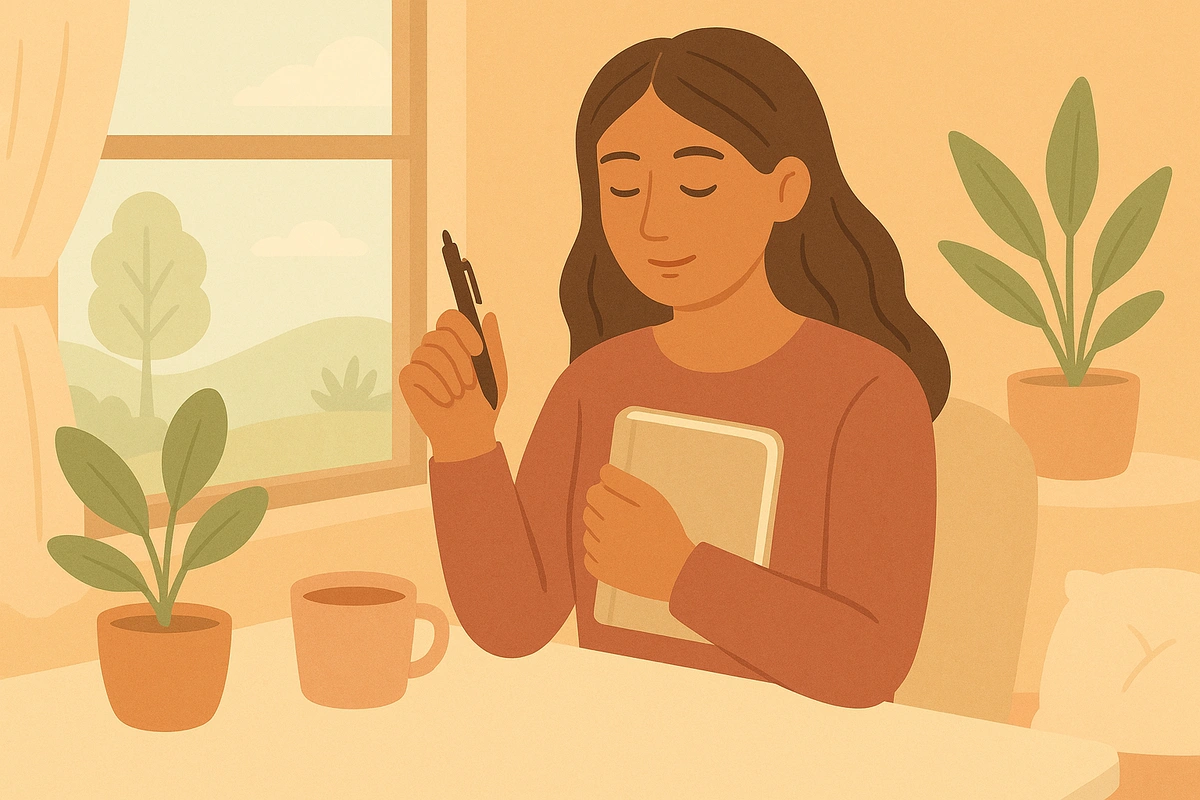Daily emotional check-ins help you pause each day to notice and name your current feelings, building self-awareness that prevents emotional overwhelm. This simple practice of tracking your emotional patterns helps you respond to stress and mood changes before they become overwhelming.

Practice daily emotional check-ins by setting aside a few minutes each day to notice, name, and reflect on your current emotional state. This mindful self-assessment builds awareness of your feeling patterns and helps you respond to emotional changes before they escalate.
Your emotions shift throughout the day like weather patterns, but you might not notice these changes until they become overwhelming. Daily check-ins create space to observe your emotional climate with curiosity rather than judgment. This awareness helps you catch stress, anxiety, or sadness early when they're easier to address with simple coping strategies.
Daily emotional check-ins work by activating your prefrontal cortex, the brain region responsible for emotional regulation and self-awareness. When you consciously name emotions, you engage what neuroscientists call "affect labeling," which reduces activity in the amygdala and calms emotional reactivity.
Regular emotional monitoring builds what psychologists call emotional granularity - the ability to distinguish between similar emotions like frustration, disappointment, and anger. This specificity helps you choose more targeted and effective coping strategies.
The practice creates what researchers call "meta-cognitive awareness" - thinking about your thinking and feeling about your feelings. Studies show that this observer perspective reduces emotional intensity and increases your sense of control over difficult feelings.
Writing down emotions engages both verbal and motor areas of your brain, which helps consolidate emotional awareness and creates external memory of patterns you might otherwise forget. Research indicates that written emotional expression reduces stress hormones and improves immune function.
Consistent timing creates what behavioral scientists call "implementation intentions" - automatic behavioral triggers that make positive habits more likely to stick. Regular check-ins become associated with specific times or locations, reducing the mental effort needed to maintain the practice.
The reflection component helps you identify emotional triggers and effective coping strategies, building what researchers call behavioral flexibility - the ability to choose different responses based on situational awareness rather than automatic reactions.
"I can't identify what I'm feeling or I feel numb" - This is common when starting emotional awareness practice. Begin with basic categories like "good," "bad," or "neutral," and notice physical sensations which often provide clues about emotions.
"I only notice negative emotions during check-ins" - Negative emotions often feel more intense and noticeable than positive ones. Specifically look for neutral or slightly positive feelings like calm, content, or peaceful during your practice.
"I forget to do daily check-ins consistently" - Set phone reminders or link check-ins to existing daily habits like brushing teeth or eating meals. Start with just 3-4 check-ins per week rather than daily.
"My emotions change too quickly to track accurately" - Emotional fluctuation is normal. Record whatever you notice in the moment without trying to capture every change throughout the day.
"I feel worse after focusing on my emotions" - Some people initially feel overwhelmed by emotional awareness. Keep check-ins brief (1-2 minutes) and focus on observation rather than analysis or problem-solving.
"My emotional patterns seem too negative or concerning" - If check-ins reveal persistent difficult emotions, consider sharing your observations with a mental health professional for additional support and guidance.